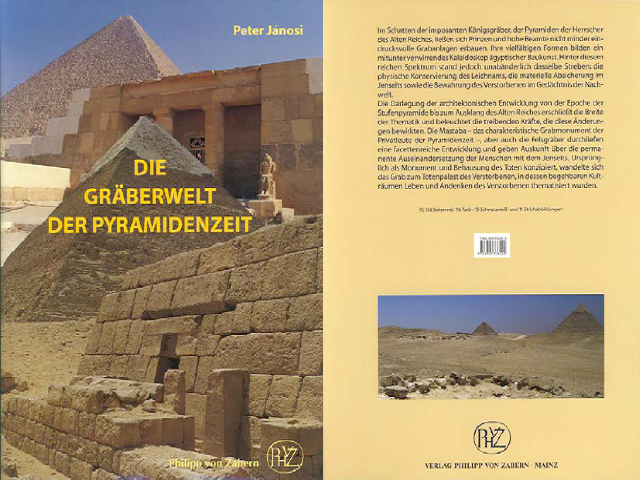Jánosi, P. 2006. Die Gräberwelt der Pyramidenzeit. - Mainz am Rhein, Verlag Philipp von Zabern
Abstract
1. Origin of the mastaba (p. 3). The concept of the Old Kingdom tomb as a subterranean ‘living’ quarter with the cult quarter as superstructure is rooted in the 2nd Dynasty; 2. Tombs in the 3rd Dynasty (p. 15). The emphasis here is on Saqqara. Both royal and private burial practices are treated here side by side. Twin mastabas are the new feature here; 3. 4th Dynasty Necropoleis (p. 33). On tombs in Meidum and Dahshur, but mainly Giza; centralized planning of the mastaba cemeteries is the main characteristic here; 4. Rock tombs in Dynasty 4 (p. 66). The Giza rock tombs are singled out and their parallels and differences with mastabas discussed. The culmination is the huge tomb of Queen Khentkaus; 5. 5th Dynasty tombs (p. 79). The individual factor became more important vis-à-vis the centralised royal influence, as opposed to the previous period. The tomb structures become increasingly complicated, like the complex of Rawer in Giza. Courts and statue rooms are an important element now; 6. Rock tombs of the 5th and 6th Dynasties (p. 120). Rock tombs in provincial necropoleis all the way to Aswan dictate the developments now, mirroring the political theatre. Read more...
Downloads




